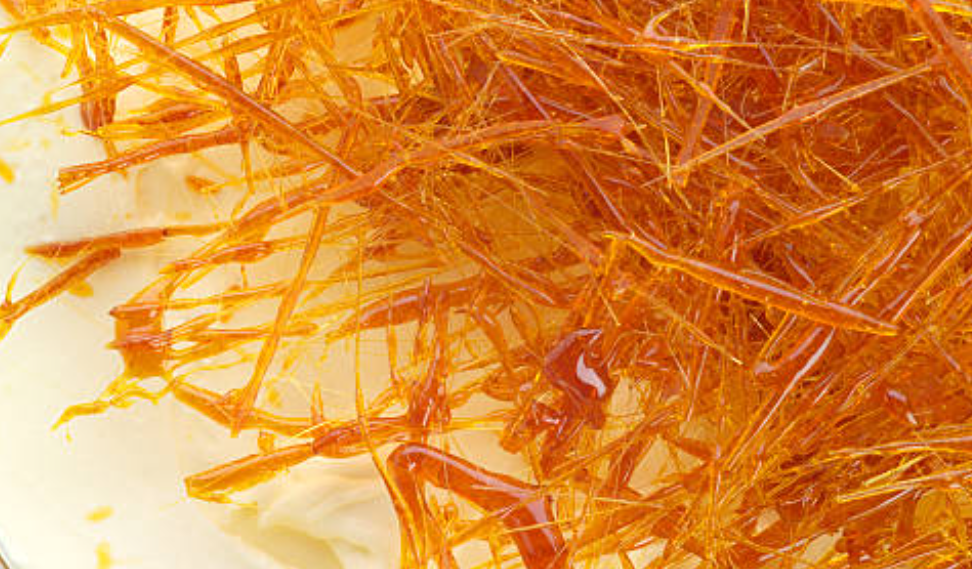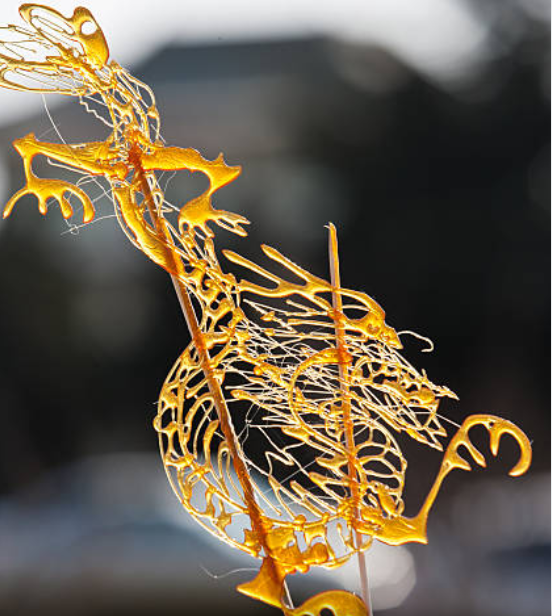 Spinning Sugar For a Croquembouche Recipe
Spinning Sugar For a Croquembouche Recipe
In this article I’d like to focus on my favorite part of any croquembouche recipe …. the spun sugar.
A croquembouche is a French delicacy made of of choux pastry puffs stacked in a cone and tied with caramel threads. It is commonly offered at weddings and baptisms in Italy and France.
The term is derived from the French word croque en bouche, which translates to “crunch in the mouth.”
A croquembouche is made up of cream-filled profiteroles that have been stacked into a cone and wrapped with spun sugar. Other confectionary, like sugared almonds, chocolate, and edible flowers, can be used to embellish it.
Croquembouche Recipe Basics
You must master three steps in order to make a croquembouche:
- The Choux which is the cream puff pastry. The major portion of this delicacy is a light and airy pastry created with butter, water, flour, and a ton of eggs, so it must be perfect.
- Pastry cream, often known as crème patisserie, is a rich vanilla-flavored custard-like filling. It’s found in a variety of sweets, including tarts and eclairs.
- The caramel or spun sugar which is the “glue” that holds this tower together. If you’ve never worked with caramel before, proceed with caution. Caramel burns are incredibly painful!
What is Spun Sugar, and how does it work?
Sugar can be spun in a few different ways. One approach is to pour caramelized sugar from a fork in a thin continuous drizzle and grasp the strands as they come towards you. This is not the way I propose because it is considerably more difficult to learn.

Instead, I’m going to show you how to spin sugar in a way that’s far more user-friendly and straightforward. It entails drizzling sugar back and forth across a rolling pin fast. You want your strands to be as thin as possible, but don’t be concerned if you get a droplet here and there.
Setting Up Your Space
Because spinning sugar is a dirty process, the first step is to cover your kitchen surface and floor with newspaper to prevent sugar leaks. Arrange three or four saucepans close together on the paper-covered surface, handles facing outward and extending over the counter’s edge. Using nonstick cooking spray, coat the handles. Because you are likely to get sugar strands on yourself, make sure you are wearing an apron or clothing that can be readily washed.
The Sugar Croquembouche Recipe
In a medium saucepan over medium-high heat, combine 2 cups granulated sugar, 1/2 cup water, and 1/2 cup corn syrup and whisk until the sugar dissolves. Cover the pot with a lid and cook for 2-3 minutes, then remove the top and continue to cook the sugar syrup until it reaches 310 degrees, stirring occasionally. The sugar will cook quickly near the end, so keep an eye on it to make sure it doesn’t burn. A candy thermometer can be used to keep track of the temperature.
Remove the saucepan from the heat as soon as the sugar reaches the right temperature and immerse the bottom in ice water to stop the sugar from cooking any further. Allow for a minute or two for the mixture to thicken somewhat.
Spinning Basics
Place a clean rolling pin on your kitchen surface so that it hangs half-way over the edge. You can use anything you have on hand to hold down the other half of the rolling pin. If it’s easier, you could also use pot handles or tape down wooden spoons.
Getting the caramel to the appropriate temperature is the most difficult component of making homemade spun sugar. It won’t drizzle properly if it’s too hot or too cold. It will take some practice, but I promise it will finally fall from the fork in a thin drizzle, forming sugar silk threads.
With one hand, hold the pan and the other, a fork. Stir with a fork dipped in sugar syrup. Remove the fork from the heat and place it 5-6 inches above the handles of the prepared pot. Flick the fork back and forth across the handles quickly. Sugar strands should drape over the handles as a result of the sugar syrup. Allow the syrup to cool for another minute if it doesn’t make any strands or if the strands have a lot of “beads.” Re-heat the syrup momentarily if the strands are lumpy and difficult to form.
Continue to dip the fork in the sugar and swiftly flick it over the handles to make many fine strands of spun sugar. You can remove the sugar that has gathered at any time and mold it into balls, nests, or narrow tubes. Continue spinning sugar until your syrup runs out or you have enough spun sugar to meet your needs.
Making The Shape For the Croquembouche Recipe
In this article I’d like to focus on my favorite part of any croquembouche recipe …. the spun sugar.
A croquembouche is a French delicacy made of of choux pastry puffs stacked in a cone and tied with caramel threads. It is commonly offered at weddings and baptisms in Italy and France.
You’ll want to slowly draw the ends together with your hands and make a loose ball of spun sugar once you’ve dripped a considerable amount of sugar over the rolling pin. You can produce individual spun sugar “halos” by separating the strands into tiny clumps, or you can construct one huge ornament. Spun sugar is rather simple to work with, so don’t be scared to explore and see what you come up with.
Finally, the shape and style are entirely up to you. If you need to spin more sugar and the caramel has solidified too much, simply return it to the heat for a few seconds to rewarm it.
This is one of my favorite sugar spinning videos:
Storing Spun Sugar
Spun sugar is particularly susceptible to humidity and heat, so I recommend producing it right before you need it. If you have an airtight container, you can keep it for a short period of time if needed. Place desiccant packets in the container with the spun sugar if you have them; they will help absorb any excess humidity.
Spun sugar is at its lightest and greatest texture right after it’s prepared.
Working with spun sugar can be fun and creative. Take your time and don’t be afraid to experiment! Share your experience with us below.

